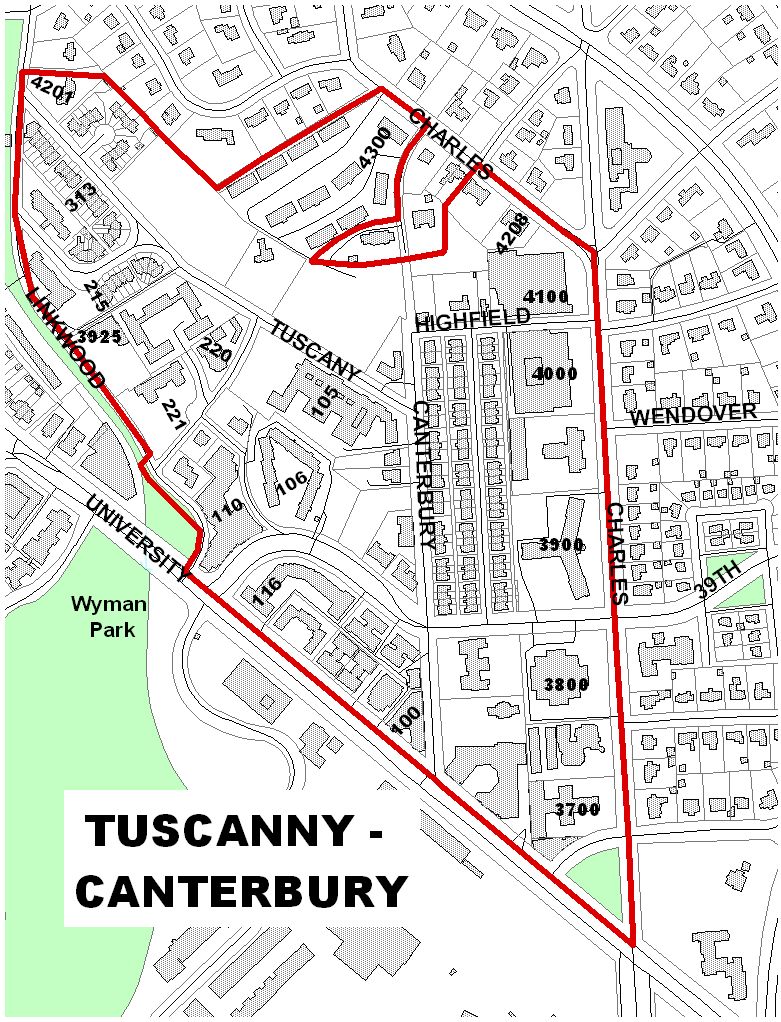Tuscany Canterbury
Description
 As the district has no stand-alone commercial buildings, it is residential in character. Commercial activity that exists in the district; e.g. restaurants, cafes, a flower shop, takes place inside apartment buildings. With one of the highest concentrations of multi-storied, communally owned private residences in Baltimore, the district still maintains a sense of intimacy. It reflects a successful integration of townhouses, multi-storied apartments, condominiums and cooperatives as well as a scattering of detached houses. English Style Row houses, Half-Timbered Tudor Revival style buildings, and various early 20th century revival style buildings are well represented in the district.
As the district has no stand-alone commercial buildings, it is residential in character. Commercial activity that exists in the district; e.g. restaurants, cafes, a flower shop, takes place inside apartment buildings. With one of the highest concentrations of multi-storied, communally owned private residences in Baltimore, the district still maintains a sense of intimacy. It reflects a successful integration of townhouses, multi-storied apartments, condominiums and cooperatives as well as a scattering of detached houses. English Style Row houses, Half-Timbered Tudor Revival style buildings, and various early 20th century revival style buildings are well represented in the district.
The district is strongly reminiscent of architectural styles from certain parts of Europe, especially of England and Germany. Most of the buildings along Ridgemede and Tuscany Roads emulate a village in southwest Germany. Cloverhill Road and part of Canterbury Road suggest an English garden suburb in the late 1800's. The grouping of the Tuscany and Lombardy Apartments and the secluded gardens of Guilford suggest European neighborhoods close to the Mediterranean. The scale along North Charles Street is a mixture of single, detached houses, mid-rise and high-rise apartments, and condominiums.
The first high-rise apartment house is the 1927 Warrington. The scale of the earliest buildings along West University Parkway is mid-rise. The materials of the buildings (brick, stucco, stone and glass) are used. Although ranging from 1 story to 18 stories, the excellent proportions mollify the scale changes. The composition of row house sections and apartment and condominium buildings are interwoven comfortably with the insertion of a few institutional and religious buildings.
Significance
The Tuscany-Canterbury Historic District is significant under Criterion A for its association with the suburban development of Baltimore in the early 20th century. Through its valuable array of historic resources, the district preserves a record of North Baltimore's transformation through stages that were subsequently rural, suburban, and urban. Evidence of this pattern of transformation, which occurred in many major cities along the eastern seaboard, is especially well preserved in Tuscany-Canterbury. A circa 1892 Victorian cottage survives to reflect the area's rural origins.
Other resources reflective of suburban trends began to be added in stages from as early as 1911, including row houses, detached houses, and apartment buildings. The district derives additional significance under Criterion C for the high quality of its architecture, the work of many of Baltimore's most prominent and accomplished designers of the period. The period of significance extends from 1892, the date of the earliest resource in the district, to 1940, by which date the development of the district was substantially complete.